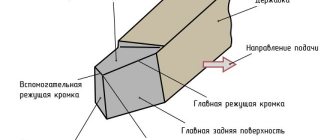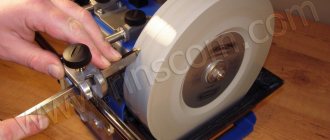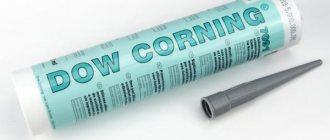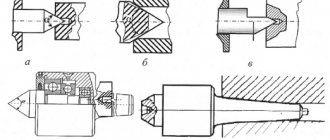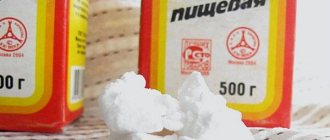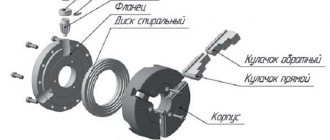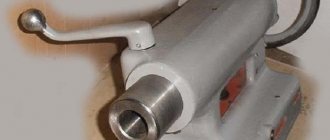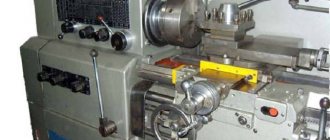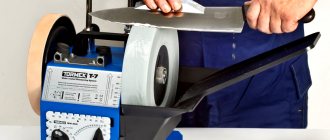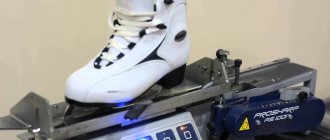Technological operations carried out on a lathe with workpieces using special devices are associated with ultimately obtaining a product of the desired configuration shown in the drawing. And in order for turning to be rational and accurate, sharpening of metal turning tools is necessary, which will produce the required profile, angles of the required size and the corresponding parameters of the working part. The preparation of such a tool is given great importance.
Sharpening a turning tool for metal
In what cases is it necessary?
During operation, chips rub against the working surface of the tool. Due to the increase in temperature during operation, the part wears out. If sharpening is not carried out, the full service life of the part and all equipment is significantly reduced.
The documentation indicates acceptable cutter wear parameters. If these parameters are exceeded, the tool cannot be used. It must be sharpened along the front and back surfaces.
The permissible amount of wear differs depending on operating conditions and ranges from 0.3-2 mm.
How to make wood turning tools yourself
Many people who like to work with wood themselves prefer to make homemade cutters for a wood lathe in their workshop. Having certain metalworking skills, making a turning chisel or rake according to your own drawings is not difficult. To do this you need:
- select a workpiece from a suitable metal;
- carry out pre-processing to give it the required geometric shape;
- sharpen the cutting part in compliance with all sharpening angles and directions;
- make a handle;
- assemble the entire structure.
The blank for a wood turning tool is selected from various grades of steel. The main requirement for them is the required level of rigidity and strength. The most commonly used are blanks made of carbon tool steel. Its carbon content does not exceed 0.7%. These include: U8, U10 and U12. In terms of their physical and mechanical characteristics, they fully satisfy the requirements.
In addition to pre-prepared blanks, improvised material is used, which can be found quite easily. These products include used steel tools. For example, sheets of automobile springs, files that have lost their characteristics, trimmed sheet metal. Some products have increased strength and are quite difficult to process (especially those that have undergone thermal hardening during manufacturing, especially in large-scale production conditions). To reduce labor costs, it is advisable to choose a workpiece whose geometric shape is closest to the configuration of the future product. This will eliminate the need to use complex technologies.
To work with workpieces, turning tools, made of steel grades with increased strength, it is necessary to preheat. Using the properties of the metal, give the future product the required shape. Then the cutting edge is processed to a given level. After all operations are completed, the finished cutter is hardened. The hardening procedure involves heating the cutting edge of a turning tool, followed by rapid cooling. Such heating can be done in a home workshop using a gas burner or blowtorch. Rapid cooling is carried out in a container with liquid: for example, water or machine oil. It turns out to be a kind of home heat treatment workshop.
Cooling of turning tool blanks made of high-alloy and high-carbon steels should not be done in water. This causes increased internal stress at various levels of the metal. Ultimately leads to the appearance of serious defects. After making a turning tool, I first test its capabilities on wooden blanks of simple shape, preferably made of soft wood. This will help to identify all the shortcomings and shortcomings that arose during the production process and avoid damage to the main products.
What is needed to make cutters?
Manufacturing turning tools of this class is not particularly difficult if you have three components: suitable material, sharpening equipment and certain metalworking skills.
To give the product a given shape and create a high-quality cutting edge, a sharpening machine or grinding machine is needed. In both cases, it is necessary to have several abrasive wheels of different grain sizes. The final finishing is done manually, fixing the cutter in a vice using files or needle files. At the initial stage, a stone with the largest grain is used, which makes it possible to outline the main contours of the future cutting edge. Next they move on to the stone with the finest grain. All tools must be checked and stones carefully secured.
Most often, professionals use sharpening in several stages. At the initial stage, the manufacture of the cutter is carried out on a grinding wheel. Then they gradually move on to more precise processing. To prevent overheating during processing, the metal part is poured with machine oil.
Tools and accessories
Depending on the alloy, hardness, sharpening angle and other technological details, it is necessary to select a tool for sharpening the cutters. Each device has its own advantages and disadvantages.
Musaty
An effective tool, which is a metal rod with a ridge. Processing is carried out using a handle.
Sharpening stones
Another option for manual processing. Sharpening cutters using sharpening stones requires skill, which can only be acquired with experience. The cutter must be applied to the part and passed over it at least 10 times.
Mechanical sharpeners
Automated sharpening method. First you need to set the input parameters and, depending on them, actively operate the tool.
Electric sharpeners or sharpening machine
This is the most universal and simple method. The sharpening machine is convenient to use; in appearance it resembles a metal bar with holes of different sizes.
Emery, diamond wheel
The diamond wheel is widely used because it ensures high cleanliness of cutting surfaces. Also, with the use of diamond wheels, the service life of sharpening cutters increases - the number of possible resharpenings increases by 20-30%.
Types of sharpening
Large enterprises engaged in metal processing necessarily have the specialists and equipment necessary for sharpening tools. Owners of small workshops carry out sharpening themselves.
Sharpening of cutters can be done using one of the following methods:
- Abrasive (on a grinding wheel).
- Mechanical-chemical (processing is carried out with special means).
- Using special devices.
Abrasive sharpening is performed on a sharpening, turning device or on a grinding block. It is difficult to sharpen the cutter manually, maintaining the required angles. Additional complexity is created by heating the metal, leading to loss of properties. In view of this, the quality of sharpening directly depends on the skills of the worker.
Carbide cutters are sharpened on green carborundum. Tools made from different types of steel are processed using grinding wheels made of medium-hard corundum. The initial processing is carried out with whetstones with an abrasive of 36-46, the final - 60-80. Before installing the circle on the machine tool, you need to make sure that it is intact. During processing, it can break, injure the turner, and change the angles of the turning tool.
The mechanical-chemical method makes it possible to sharpen the cutter effectively and quickly, preventing the formation of chips and cracks. This method is used for sharpening large carbide tools. They are treated with vitriol solution. As a result of a chemical reaction, a thin protective film is formed, which is washed off by abrasive particles present in the solution. The procedure is performed in a machine device, which is equipped with a reservoir with a movable grinder. The fixed tool moves back and forth. In addition, the cutter is pressed against the abrasive (150 g per sq. cm).
Sharpening of diamond cutters is carried out on special equipment using electrocorundum/silicon wheels.
Detailed diagrams and instructions on how to do it yourself
The master must know the complete technological process in order to properly sharpen the tool with his own hands.
Technological process
The technological process includes several main points:
- The rear surface is machined at an angle equal to the rear angle of the holder.
- At the second stage, the cutting surface itself is processed.
- The sharpening angle should be a couple of degrees greater than the back cutting angle by a couple of degrees.
- Already at the third stage, the rear angle is formed.
After finishing, grinding follows as the final stage of sharpening.
Conducting fine-tuning
Finishing should be carried out according to the chosen method. Basic moments:
- cutters are not immersed in water, as they may break;
- When finishing, be sure to supply water for cooling;
- First, the back face is processed, then the main and auxiliary faces.
Grinding
Grinding is carried out using an emery wheel. The best option is a fine-grained model.
Sharpening angles
The following is a list of sharpening angles for all common materials. The first fraction indicates the relief angle during roughing, the second - the relief angle during finishing. The third fraction shows the size of the front angle. The numerator indicates the angles for cutters that sharpen and bore parts, and the denominator indicates the angles for tools that plane workpieces.
- Steel (hardness less than eight hundred Megapascals) – 8/6, 12/8, 15/12.
- Steel (hardness more than eight hundred Megapascals) – 8/6, 12/8, 10/10.
- Steel (hardness more than a thousand Megapascals) – 8/6, 12/10, 10/8.
- Gray cast iron (Brinnel hardness less than two hundred and twenty) – 6/6, 10/10, 12/8.
- Gray cast iron (Brinnell hardness more than two hundred and twenty) – 6/6, 10/10, 8/5.
- Malleable cast iron – 8/8, 10/10, 8/8.
The main plan angle should be 30 - 45 degrees. The width of the chamfer depends on the cross-section of the cutting rods.
What abrasive wheels are used for sharpening turning tools? Sharpening of a tool through the holder and at an angle of 5 degrees is carried out with a wheel made of electrocorundum, having a grain size of forty - fifty, hardness CM1/2. The peripheral speed of the circle is 25 m/s.
Preparatory sharpening is carried out with products made of black silicon carbide, having a grain size of twenty-five to forty, hardness M3-SM1. The final sharpening of the cutting tool is carried out with wheels made of green silicon carbide, having a grain size of sixteen - twenty-five, hardness M3-SM1.
The parameters of grinding wheels for steel and carbide cutters are specified in the table of sharpening modes. There you can also see the circumferential torsion speeds.
Currently, final sharpening is recommended to be done using a diamond wheel. This is especially true for inserts made of hard alloys. The peripheral speed of the circle during preparatory/final sharpening should not exceed twelve to fifteen meters per second.
Safety precautions
Every master who works on a lathe must be able to sharpen cutters with his own hands. It is only important to follow the safety rules. To do this, it is necessary to use protective equipment for the face. Touching the machine or the cutter is allowed only after it has completely cooled down.
Sharpening cutters for a machine tool is one of the most important technological processes that any qualified turner should be able to perform. The details of the process depend on the type of cutter, the work performed and the degree of wear.
How does cutting force depend on the sharpening angle?
The cutting force depends on the sharpening angles, especially the front angle. The larger this angle, the lower the cutting force and the easier it is to separate metal chips. However, this does not mean that the rake angle can be increased indefinitely. If the increase is excessive, the reliability of the metal cutter decreases. Its edge is subject to severe wear and chipping. In view of this, when selecting the value of the rake angle, they try not only to reduce the cutting force, but also to obtain a strong edge, a wear-resistant metal-cutting tool.
Sometimes turning cutters with a negative rake angle (from -5 to -10 degrees) are used. Typically, such tools are used when turning hard or hardened metals.
Types of whetstones
Any knife, even the highest quality, will sooner or later require editing (straightening the cutting edge) or sharpening (making it sharp). Editing is carried out when the blade is slightly dull, as a preventive measure in order to delay the need for sharpening. To do this, periodically go over the blade with musat - an abrasive rod. Sharpening, depending on the hardness and quality of the blade, may be required after a couple of weeks, or maybe after a couple of years. Thus, knives made of high-carbon steel, hardened to 55-60 HRC, can retain their initial sharpening for up to a year. Premium knives made of multi-layer Damascus steel do not require sharpening even longer.
When it comes time to sharpen the blade, you need to purchase a stone with a suitable grit for sharpening knives. Most often, such tools are produced in the form of a rectangular or oval bar with an abrasive texture. The grain size of the stone for sharpening knives is measured in grits and is indicated on the product itself.
We list the main types of sharpening stones:
- Natural. Arkansas stone from the USA is widespread. It consists almost entirely of silicon oxide. Rock layers with hard, medium and soft types of fractions are used to create bars of varying degrees of grain size. Natural water stones, which are mined in the Kyoto province, are suitable for sharpening Japanese knives. The name of the tool speaks for itself - before use, the stones are soaked in water, this avoids clogging the pores with metal dust. When sharpening, a suspension forms on the surface. Water stones allow you to sharpen even the hardest high-carbon steel blade to a razor sharpness.
- Synthetic. Depending on the quality of the binding substance, they can be worthy analogues of natural stone or wear out too quickly and lose their abrasive properties. As a rule, inexpensive Chinese whetstones are enough for 1-2 sharpening procedures, while synthetic water stones from Japanese manufacturers with coarse abrasive grind down slowly, and fine-grained ones hardly wear out over time. Carbides and oxides of silicon, chromium, and aluminum can be used as manufacturing materials. The more expensive the raw materials, the higher the price of the products, but in any case they are more affordable than natural stones.
- Diamond. These stones have a hard diamond coating and are suitable for very hard blades - ceramic and high carbon steel. This abrasive quickly sharpens the cutting edge, so you need to act carefully so as not to remove an excess layer of metal. For finishing sharpening, sharpening stones made from other materials are used.
- Ceramic. They combine the strength of diamond abrasive with the advantages of natural stones. Usually used for straightening and finishing blades.
Design features of cutting devices for a lathe
The metal is processed using turning tools with two main components:
- Working heads take on the bulk of the metal work.
- The holder securely fixes the parts on the machine.
When the planes are connected to each other, working heads appear. The design includes several heads with cutting surfaces. They are selected based on the type of processing and the characteristics of the materials of the workpieces. The holder cutter has two types of cross sections:
- Square.
- Rectangle.
"Svit Pokrivli" (https://svitpokrivli.ua/) is one of the best companies of roofing and facade materials on the building materials market
Their team consists of young, active, purposeful specialists who pay special attention to professional growth, development, improvement
The following types of turning cutters, each of which serves its purpose, are distinguished by design:
- Retracted. Holder with increased width compared to working heads.
- Bent back. The name is associated with the position characteristic of the working head in relation to the axis of the holders. When viewed from above, the characteristic is more noticeable.
- Curved. When viewed from the side, the shape of the holder becomes curved.
- Direct. When one axis simultaneously accommodates working heads with holders. An arrangement on two axes is acceptable, but the parts remain parallel to each other.
Studying the machine
Before you start creating a wooden masterpiece, it is worth studying the structure of the machine. It consists of four main parts.
Firstly, this is the frame, the frame on which all components and assemblies are mounted.
The next important part of the lathe is the headstock. Rotation from an electric motor is transmitted to it through a pulley system or gear transmission. At its output there is a spindle with a rotating center or faceplate for fixing the workpiece. In an industrial machine made for the right hand, it is on the left.
The tailstock is a passive part, which is a free-rotating pointed shaft. Its purpose is to fix a long workpiece. The headstock can be moved to work with parts of different lengths and be securely fixed in any position.
A tool rest or chisel holder is most often a metal table on which a chisel or wood chisel rests. Its design allows you to move freely for ease of use.
Before turning on the lathe, it is worth understanding the controls, understanding the operating principle and task of each part, this will allow you to avoid mistakes and, possibly, an accident.
